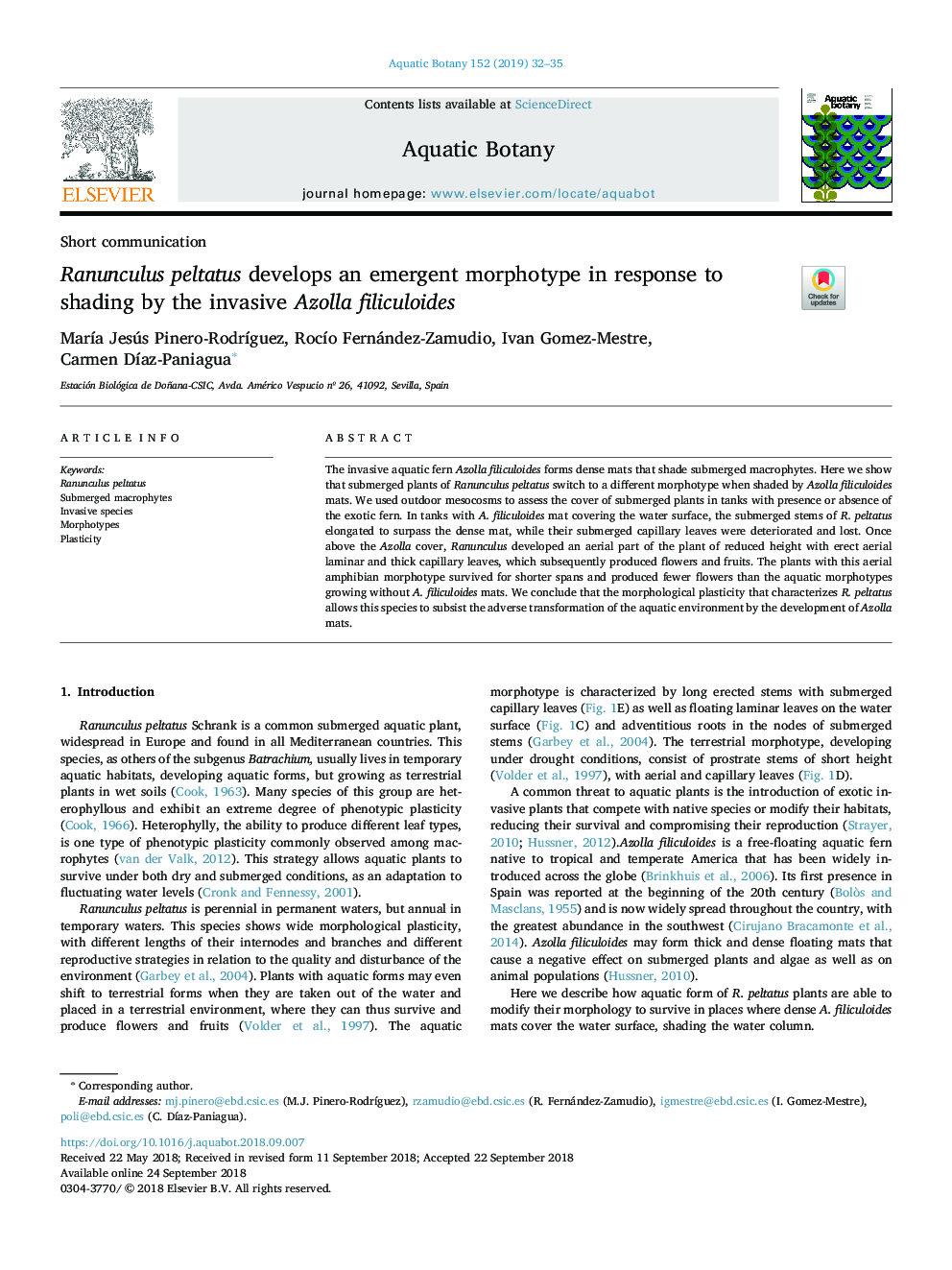| Article ID | Journal | Published Year | Pages | File Type |
|---|---|---|---|---|
| 11024938 | Aquatic Botany | 2019 | 4 Pages |
Abstract
The invasive aquatic fern Azolla filiculoides forms dense mats that shade submerged macrophytes. Here we show that submerged plants of Ranunculus peltatus switch to a different morphotype when shaded by Azolla filiculoides mats. We used outdoor mesocosms to assess the cover of submerged plants in tanks with presence or absence of the exotic fern. In tanks with A. filiculoides mat covering the water surface, the submerged stems of R. peltatus elongated to surpass the dense mat, while their submerged capillary leaves were deteriorated and lost. Once above the Azolla cover, Ranunculus developed an aerial part of the plant of reduced height with erect aerial laminar and thick capillary leaves, which subsequently produced flowers and fruits. The plants with this aerial amphibian morphotype survived for shorter spans and produced fewer flowers than the aquatic morphotypes growing without A. filiculoides mats. We conclude that the morphological plasticity that characterizes R. peltatus allows this species to subsist the adverse transformation of the aquatic environment by the development of Azolla mats.
Related Topics
Life Sciences
Agricultural and Biological Sciences
Aquatic Science
Authors
MarÃa Jesús Pinero-RodrÃguez, RocÃo Fernández-Zamudio, Ivan Gomez-Mestre, Carmen DÃaz-Paniagua,
